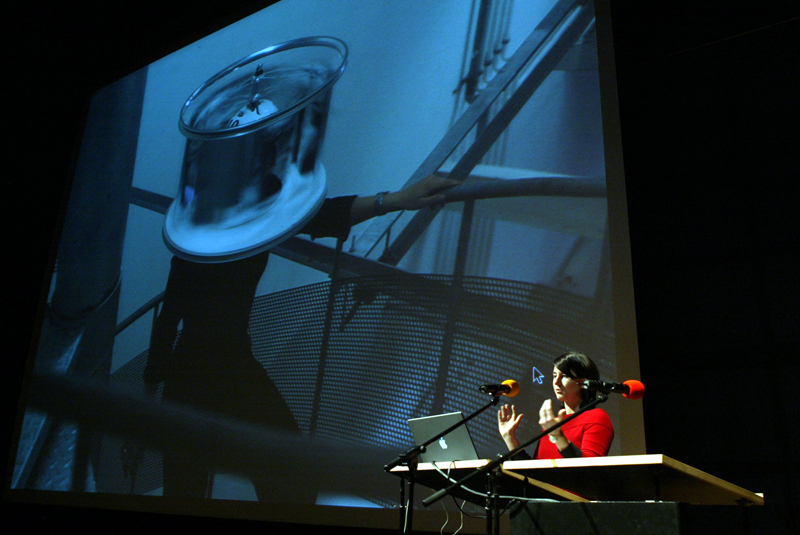Plato’s Cave Experience
Translating the allegory of Plato’s Cave from philosophy to mathematics, then into a construction plan for a mechanism that generates the experience or the relativity of reality as described in the original allegory.
Nadine Meisel studied with the architect Daniel Libeskind, who challenged his students to “Build Plato’s Cave” (see Plato’s Cave Allegory and this Short Reading Text or Audio version).
Daniel Libeskind’s briefing to his students in 1999:
“Find an allegory for the cave! Invent the scale/model/plan!
The text is about seing, a story of light related to space.
What light? What space?
Be scientific!
Utilize knowledge and experience.
To make an object.”
Nadine Meisel translated the Cave Allegory into a mathematical equation, including several elements from the story. This led to the insight that Plato’s cave must be a system of encapsulated caves, each being a different sphere of awareness.
It is impossible to build it in three dimensions because of its infinite recursiveness, but Nadine Meisel invented a way to represent it:
The mechanism is a helmet that spins around your head, varying your perception of space. Mirrors are arranged such that you can never view anything directly.
It changes direction and movement and projects an image of yourself from different perspectives. You get a 360 view of your surrounding as well as of yourself. The faster it spins, the more the different perspectives merge with one another.
Nothing you see is in its place! Inside & outside merge.
Moving around, you experience absolute disorientation within a familiar space. You get accustomed to it, and must readjust once you remove the helmet.
Nadine Meisel “realised” Plato’s Cave as a mechanism to experiment with perceptions of reality in order to become aware of the relative truth of what “I’m seeing” as described by Plato’s Allegory of the Cave”.
Awarded with Günther Schroff Scholarship by Peter Weibel
and Peter Sloterdijk and other Philosophers, Mathematicians and Politicians at ZKM Karlsruhe in 2003.
Exposed in 10 years HfG@ZKM Karlsruhe 2002, and MIBA Inventor Museum Barcelona 2012.
Published in books: “The Daniel Libeskind Research Studio” 2010 and “Karlsruher Ikonotope 1992-2002“.
User feedback:
“It’s like having a real-life flashback of the now!”
“To get to my goal I had to relax and let go of expectations”
“It is almost like trying to live inside an M.C. Escher drawing.”












